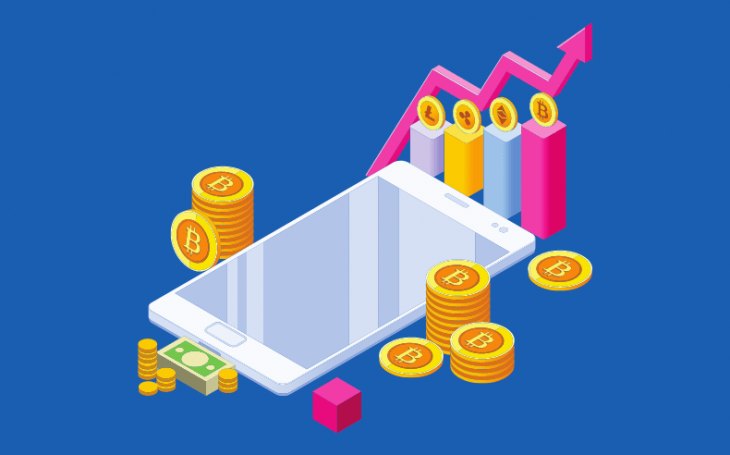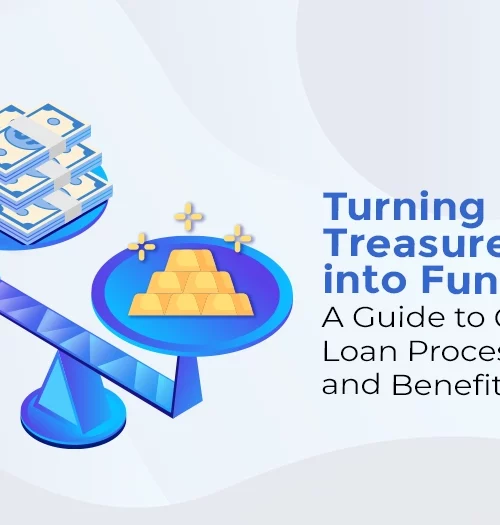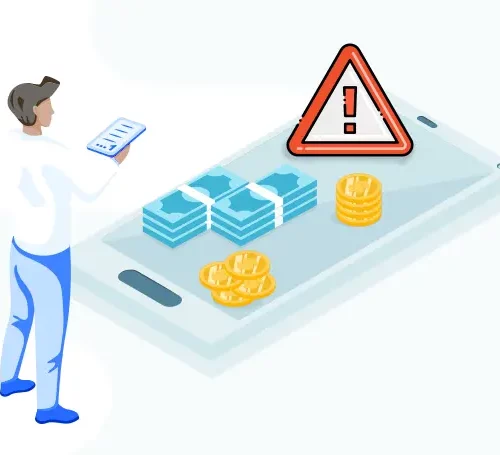How Mobility Is Transforming The
Lending Sector



If someone told us a decade ago, how mobility is gonna make sweeping changes in every aspect of our life, we would have scoffed. But look at us today, mobile phone and technology have become an integral part of our life from manufacturing to checkout lanes at supermarkets, no sector has been left untouched by the innovation in mobile technology.
Lending institutions have joined the race of mobilising the sector due to the demand of the “smartphone obsessed” clients of today. Leveraging the groundbreaking capabilities of the next-gen mobile phones have helped them to streamline their workflow and reduce their overall turnaround time.
You may also like: Interesting things about History of Lending
Loan Origination Process
Traditional loan origination process used to be a nightmare of arduous paperwork. Once a potential borrower is identified, a sales agent / Business Correspondent contacts them to complete the application paperwork and gather documents for underwriting. The sales agent would then submit the application, which would then be forwarded to the loan officer.
In the case of incomplete documentation, the sales agent may have to get in touch with the borrower and retrieve them. Else, the application would be rejected. As you could see, a small mishap could have an adverse effect on the TAT.
Once the application is submitted, it may take quite a few days to complete the verification process. Even retrieving the application status amidst this chaos would be highly impossible which would just aggravate the already concerned borrower.
Mobility in Loan Origination
The new-age mobile applications not only eliminate the application paperwork but also take care of documentation and credit assessments injecting a sense of transparency into the process.
e-KYC
Mobile apps have integrated e-KYC solution this aspect simplifies the onboarding process, reduces the mayhem of submitting relevant proofs(address proof, identity proof, pan card, etc. and) completes the entire verification process in a fraction of seconds.
However, not everyone would be allowed to access the confidential data of an individual, and it could be done only with the proper consent of that particular person.
In the case of Aadhar, the verification process could be carried out only in two ways either using a unique OTP or the Biometric information of the individual (Finger Print Scanning and IRIS).
You May Also Like:
Sales Agents
Empowered with a mobile application, sales agents could complete the entire application process within a matter of minutes. All they’d have to do is fill up a form of borrower’s information, upload required documents and submit it online.
As the entire process is completely automated, there would be no room for error or incomplete documentation. A sales agent could easily retrieve information about the status of an application through the mobile device and alleviate the concerns of a customer immediately.
Customers
Instead of depending on a Banking Consultant, customers could use the self-service mobile app directly and apply for loans right from the comfort of their home.
The user-friendly nature of mobile apps would help them complete the application soon and keep them informed of the status of their loan application.
Financial Institutions
The automated application process and the document identification aspects available in a sales agents mobile app reduces manual labour, simplifies the loan origination process, and improves customer satisfaction.
Overall Impact
Mobility loan origination helps lenders accelerate the lending process, eliminates paperwork, reduces latency, makes the application status transparent and keeps customers satisfied.
Credit Scoring
Credit scoring plays a vital role in the loan approval process. Lending Institutions often draw the final decision based on the credit score of a borrower.
Challenge
However, in the case of emerging economies which promote financial inclusion, the majority of the borrowers may not have a prior credit history, in those cases, it is not possible to depend completely on traditional credit scoring data like CIBIL score.
Though the e-KYC system comes as a boon to verify the customer’s identity, verifying their credit worthiness was a nightmare. But how could mobile applications lend a hand to sort out this issue?
Mobility in Credit Scoring
To solve this dilemma, the financial institutions have come up with a completely customized credit evaluation system which uses new-age data and mobile technology to evaluate a Borrower’s ability, stability and intent to pay when processing their loan request.
Their evaluation system uses several data points across personal, financial, and social media are used to evaluate a customer’s creditworthiness using a custom-made mobile app.
This app appraises a customer’s behaviour based on the data available across the several apps installed on their mobile phone. It even analyses their psychometric behaviour with a questionnaire of sorts to bring maximum possible people under the anvil of organized credit.
You May Also Like: Alternative Credit Scoring – Why Is It So Popular?
Watch this TED talk to know how Shivani Siroya unlocked the untapped potential hidden in the data captured on an individual’s mobile phone by creating a credit scoring model exclusively for the unbanked borrowers in the developing countries.
Here, she explains the challenge she faced while creating a credit scoring model for a person who has no prior credit history and how she harnessed the power of the mobility to identify potential opportunities.
She narrates the story of Jenipher, a 65-year-old small business owner in Nairobi, Kenya. Though Jenipher has been running a food stall in the central business district for decades, she had neither the collateral nor the credit history required to apply for a loan from a financial institution.
Jenipher ruled out the option of Loan Sharks, as the interest rates were sky-high. Though she was eligible to apply for a microloan through a Joint Liability Group, the meagre sum made this option inadequate for her requirements.
When she was looking for alternatives, Jenipher’s son came across Shivani’s app and convinced her to apply for a loan through it. The application prompted her to go through a psychometric test of sorts and requested access to specific data points on her device.
Once the request was granted, the app deciphers both good and bad aspects of issuing Jenipher a loan. The small savings balance and credit history raised red flags from the perspective of a traditional lender. But the alternative data retrieved from her device painted a different picture altogether.
The mobile app took an array of options into consideration, right from the basic biographical information of the borrower to the number of people they contact on a daily basis. They assess the borrower based on the size of their network/support system, and the consistency they demonstrate on a daily basis.
After much research, they figured out the following facts from the behavioural data:
- 4% increase in repayment rate among people who contact their family frequently
- 6% increase in repayment among customers who have consistent travel pattern.
- People who communicate with atleast 58 or more different contacts on an everyday basis were proven to be good borrowers.
Based on a thousand different data points like the examples mentioned above, Shivani’s organisation granted Jenipher a loan based on her willingness and capacity to repay deciphered using the mobile behavioural data.
Tala (Formerly Inventure) has helped deliver around 200,000 loans in Kenya in 2016. Initially, they had a default rate of 50-60%, but with the credit model, it dropped down to less than 10% thus making the repayment rate in line with that of traditional banks.
Overall
Leveraging alternative credit scoring aspects to come up with a new-age mobility solution would slay the hindrances in the traditional methods and let the nation take a step towards financial inclusion.
Repayment/Collection
The collection is an integral part of the lifecycle of a loan. Any delinquency in this stage could cause problems for both parties involved – Financial Institutions and Borrower.
Technology has made the tedious process a breeze. We are aware that tech savvy customers could make their repayment with the touch of a screen using their mobile app, but what about technically challenged folks who are located in remote areas of the nation?
Business Correspondent
This is where a Banking/Business Correspondent comes in. They bridge the gap between financial institutions and their customers.
BC’s act as representatives of the lenders and play a substantial role by taking care of all crucial tasks like collecting loan applications from villagers, forwarding them to the financial institution, field investigation, and also helping the financial institutions in collecting EMIs/recovering the loan money.
Equipped with a mobile device that is integrated with the core banking cloud application, a BC could perform transactions on behalf of a customer seamlessly. Instead of hustling around with collection sheets they could just update the repayment status on their mobile app immediately.
Besides replacing the collection sheet, a mobile app could also act as a knowledge base for loan officers which they could refer to answer customer queries about repayment schedule, previous payments, pending balance, etc..
You May Also Like: Why Should You Use
Though it seems great as a business model that takes, it has its fair share of risks as this sort of transfers the overall responsibility to a third party. Regulation measures like rigorous internal audits and policies can mitigate the risk factor only to a certain level.
To ensure that compliance is maintained constant supervision of the third party agents becomes fundamental. Mobility comes in handy to resolve this issue as well. The built-in GPS tracker in the mobile app would help the lenders keep track of a field agent’s real-time location and prevent any potential frauds.
In short, mobility could speed up the repayment process considerably, enhance the operational efficiency of a collection officer, and prevent potential frauds(like the EMIs being used as Float Money).
Notifications
Right from the stage of application to fulfilment and repayment, mobility solutions tend to come in handy with the frequent notifications about the loan status or critical reminders regarding the loan account.
Customers get push notifications about a change in their loan status or reminder about repayment schedule on their app. Field officers get notifications about the allocation of a case or the loan account on their mobile device.
Offline Sync
When a loan officer is travelling to remote locations for collecting loans, he may have to deal with network disconnectivity. However, his work entails making a note of repayments on the collection sheet and reporting the same to the back-office at the end of the day while depositing the collected money.
This process requires smooth synchronisation of his updates. The offline sync feature of the mobile app would ensure that the data entered by an agent is cached & stored until the connectivity is restored. When the officer gets back to an area with good network connectivity, the cached data will be synced with the server.
Summary
Mobility has unarguably played a huge role in reducing the inefficiencies in the lending sector. The latent process of traditional loans has been transformed completely to a swift mode using the latest technological advances.
Mobility reduces the overall TAT of a loan application process, injects transparency into the equation, reduces staff problems, promotes user experience and bridges the gap between customers & financial agency with just a touch of a screen.
Undoubtedly, Mobility is the way forward for rapid development in the lending sector. As the Mobile phones have become an integral part of an individual’s life, the mobility solutions have turned out to be a “must-have” feature for Financial Companies to gain traction in the lending industry.
Related Post

Introduction: Credit Reporting to Credit Bureau by Financial Institutions
Key Players: Financial Institutions in Credit Reporting Banking Companies: These

Turning Treasures into Funds: A Guide to Gold Loan Processes and Benefits
A family in need of an emergency fund to cover

How To Identify Fraudulent Digital Lending Apps? Types of Lending Frauds and Their Impact
It’s no doubt that Digital Lending Apps have taken the
- Email: salesteam@cloudbankin.com
- Sales Enquiries: +91 9080996606
- HR Enquiries: +91 9080996576